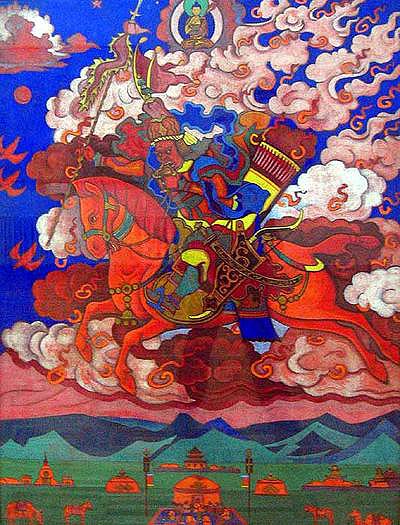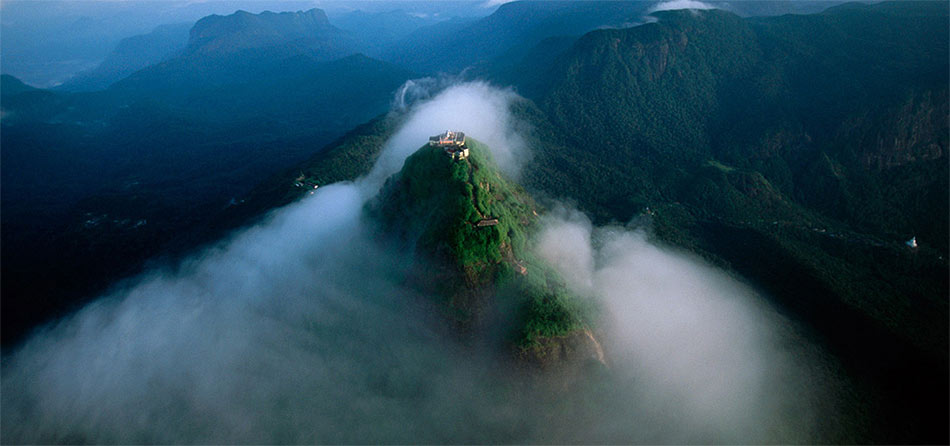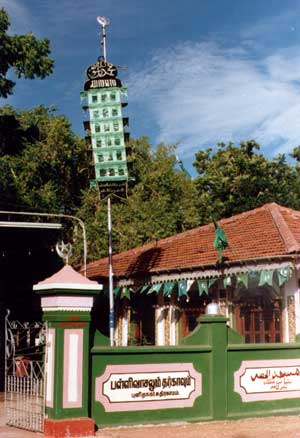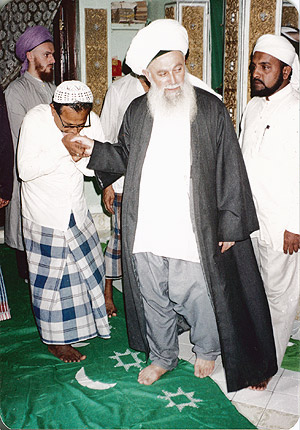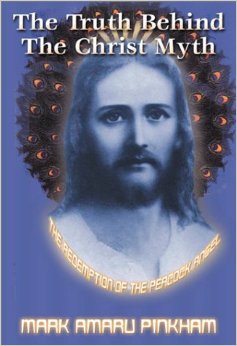
|
||||||||
|
| ||||||||
The Return of the King of the WorldWhy Myths and Legends from Many Cultures Share This Common Themefrom Atlantis Rising magazine of July/August 2007 #64by Mark Amaru PinkhamThe legends and scriptures of the Near and Far East are full of references to an ancient “King of the World” who supposedly ruled the earth thousands or even millions of years ago and is destined to make his reappearance on the world stage as we inch towards a new age. The Tibetans maintain the King of the World resides in Shambhala, the fabled Land of the Immortals, and has been patiently waiting for hundreds and thousands of years for an opportunity to lead his army out of his kingdom to destroy the darkness and “evil” that covers the planet during its latter days. The Buddhist Lamas in Mongolia echo this Tibetan belief, although they differ from their Asian neighbors by asserting that the home of the world’s monarch is Agharti, a subterranean kingdom underlying much of continental Asia. But in tandem with their Tibetan neighbors the Mongolians similarly assert: “The King of the World will appear before all people when the time shall have arrived for him to lead all good people of the world against the bad….” (Beasts, Men and Gods, pg. 317). Perplexed by these exotic prophecies regarding the King of the World, Westerners have long debated over their merits and whether they should be interpreted literally and/or figuratively. Is the King of the World an actual human entity, or is he an energy or spirit that will in some way transform and cleanse the world when it re-emerges? What could be proof of the monarch’s physical existence, however, may have come to light over the past two hundred years through the expeditions of such Western explorers as Nicholas Roerich and Ferdinand Ossendowski. These Russian explorers crossed the deserts and mountains of eastern Asia during the 1920s and returned from their travels with documented testimonies from those who claimed to have seen the King of the World during his appearances in India, Mongolia, Tibet and Thailand. In the book of his travels, Beasts, Men and Gods, Ossendowski even claims that during his visit to the Mongolian monastery in Narabanchi he was shown a chair the planetary ruler is alleged to have sat upon in 1891 while making prophecies to the resident monks regarding the ensuing fifty-year period. Following this revelation his Buddhist guides told Ossendowski that the ancient name of the King of the World was “Om,” and that he was “the first Guru” and “the first man to know God.” Because of his saintly character, they stated, “God gave him power over all forces ruling the visible world.” But once Ossendowski left Mongolia a fascist regime descended upon the country and the Russian’s sources regarding the King of the World quickly dried up. The same must be said for Roerich, whose information related to the world’s monarch was derived principally from Tibetan Lamas who greeted him as he visited their monasteries with ecstatic cries of “It is the time of Shambhala!” meaning the world’s king was soon to emerge from his land of Shambhala and initiate a new age. But Tibet’s king and the golden age he was heralding never materialized, and soon after Roerich left the mountainous Asia country it was ravaged by Chinese Communists and its monks slaughtered. But because of this twist of fate, should the West now turn a deaf ear to prophecies regarding the King of the World? What if the ‘monarch’s’ re-entrance onto the world stage was delayed or miscalculated? And what if his reappearance was always destined to occur in a different location? There is, in fact, another location in Asia’s southern extremity which for hundreds and thousands of years has also been referred to as a home of the King of the World and the place he will reemerge from. This is the tiny island nation of Sri Lanka, where within the small temple village of Kataragama the adherents of three major religions currently join together to worship this deity who has been called “King of the World.” In the traditions of the Moslem Sufis, who refer to him as al-Khadir, it is believed that this semi-mythical deity makes a public appearance at Kataragama every five hundred years. The world has currently reached the end of another five-hundred-year cycle, which is why many Sufis are making annual visits to Sri Lanka in hopes of catching a glimpse of their deity. According to their prophecies the current reappearance of the world monarch will be very special because it will mark the beginning of a golden age. There is certainly a case that can be made for the ‘monarch’ having chosen Sri Lanka as his headquarters in the ancient past. For example, Moslems throughout the world claim that the island is the site of the original Garden of Eden, and as proof of this they refer a seeker of the truth to the top of the island’s second highest mountain, Adam’s Peak, where set into stone is a five-foot long footprint they claim was made by Adam when God set the first man in the Garden of Eden. If the Moslems are right about Sri Lanka being the birthplace of human civilization it would follow that it could also have become home to the world’s first ruler. In support of the Moslems’ assertions regarding the island many mythologists, geologists, adherents of continental drift theory, and proponents of esoteric history have argued that Sri Lanka should be considered the Garden of Eden because it was once part of a larger Pacific continent that they regard as the “Cradle of Civilization.” Also known as Lemuria, Mu, and Kumari Nadu, the “Land of the Sons of God,” as well as Hiva, “the Motherland,” and Havaii-ti-Havaii, “the place where life began and developed,” the various names of this ancient land support its claim of being at least a Garden of Eden. Its claim to being the first civilization has most recently been researched by Stephen Oppenheimer, author of Eden of the East, who lived in southeast Asia for many years while compiling reams of information claiming that many of the world’s customs, legends and languages were derived from “Sundaland,” which is a name for the western extreme of Lemuria that is currently underwater. This sunken land mass, located in the Malaysia Archipelago, was above water as recently as 11,000 years ago when it served as the “Garden of Eden” and cradle of civilization for much of the language and culture that eventually covered Asia and Europe. When the early Theosophists made Adyar, India, their world headquarters in the 19th century, their researchers found evidence that Lemuria was not only the Garden of Eden but also home to an ancient “King of the World.” In some south Indian scriptures they discovered maps showing Sri Lanka and India joined to Lemuria as late as 30,000 BC, and later while poring over ancient Hindu and Tibetan scriptures they found references to Lemuria as being the place where the Sons of God, or Kumāras (their Sanskrit name), first taught humanity the path of spiritual transformation that leads to communion with God. It was their leader, Sanat Kumāra, who is said to have become both the world’s first Guru as well as its first monarch, thus elevating him to the throne of a planetary theocracy with himself as its priest king. The Theosophists also discovered that when Sanat Kumāra became the first King of the World he merged his spirit with that of the earth’s to become our planet’s virtual will and mind, or as they called it, the Planetary Logos. After this merger was complete, it was said, the will of Sanat Kumāra manifested as the actions of all creatures that lived and walked upon the earth, which had become his physical body. As far as humanity was concerned, Sanat Kumāra became our collective mind, our collective consciousness. We were him and he was us. So when humans developed an ego and “fell,” so did the world monarch, which is why the King of the World eventually became associated with the egotistical Lucifer during the Christian era. But before any Luciferian associations were ascribed to the King of the World he had been worshipped during the Neolithic Age as the Green Man, with his physical body being associated with the earth’s prodigious vegetation. At that time, when the world’s principal deity was the Goddess, it was said that the King of the World was the Son of the Goddess who was born annually from the body of his mother, the solid earth, in the spring and then died each autumn. Eventually the first resurrection legend emerged which stated that the Son of the Goddess lived and died each year and then was reborn the following spring. The name that the Theosophists discovered in the ancient texts for the King of the World, Sanat Kumāra, is also a name he is known by within the temple city of Kataragama, Sri Lanka, where Buddhists, Moslems and Hindus currently join together for his worship. Here the monarch’s scepter is a shining lance, his symbol is the Tamil Om, and his sacred mount is the peacock, an animal that has become throughout India, Tibet, China and Sri Lanka a symbol for the primal guru and a head of state. Hindu legend claims that the king was given the throne of the world by his parents, Shiva and Shakti, and a replica of his Peacock Throne can be found at his temple city in Palani, India.
Besides Sanat Kumāra, the monarch’s Hindu epithets include: Murugan, Skanda, and Karttikeya, the Commander of the Celestial Army. The Moslems at Kataragama know him as al-Khadir, the “Green Man,” and they also venerate him as the “Initiator” who discovered the fountain of youth. Outside of Sri Lanka and India he is known by similar epithets and regal associations. For many ages the Greeks and Egyptians have known him as their legendary world monarchs Dionysus and Osiris. According to Ptolemy 'Father of History' of the second century AD, whose contemporary Mediterranean mariners spent months waiting in Taprobane or Lanka for favorable return winds, mariners who heard about the Kataragama god considered him to be the Greek god Dionysus! Tibetan Buddhists no doubt have a similar experience when visiting Kataragama. Similar to Sanat Kumāra, the spirit of their King of the World in Shambhala, Amitibha, rides upon a peacock, and the flag of the fabled land is the Peacock Banner. Within the Jewish tradition Sanat Kumāra has been associated with King Melchizedek, and in the Sumerian legends he has been linked to Ea or Enki, whose names denote “Lord of Wisdom” and “Lord of the World.”
In my book The Truth Behind the Christ Myth: The Redemption of the Peacock Angel, I trace the movement of Sanat Kumāra’s myth as it traveled westward from Lemuria and across Asia during which time the monarch was adopted by the Persians as their King of the World, Mithra, while also becoming Melek or Malak Taus, the “Peacock King” or “Peacock Angel,” the legendary world monarch of the Yezidi people of northern Iraq. It was through their interactions with the Yezidi and the Sufis during the 12th and 13th centuries CE that the Knights Templar became familiar with the King of the World and nominated him their patron, St. George, which means the man of geo, the Earth Man or Green Man. When the Templars returned to Europe and authored the original Holy Grail manuscripts they wove the King of the World into their story as the Fisher King, the original Guardian of the Holy Grail and preserver of the secrets of immortality. In Knight Wolfram von Eschenbach’s Parzival, the Fisher King reveals his heritage by wearing a hat made of peacock feathers. Thus, Sri Lanka’s claim to being the Garden of Eden and home of the first world monarch can be supported by both history and science. But the question still remains, will this semi-mythical King of the World manifest in a physical human form on the island? Prominent Sufi leaders, such as Sheikh Nazim Adil Al-Haqqani, world leader of the ancient and prestigious Naqshbandhia Order of Sufis, were convinced that he will and made regular visits to Kataragama to learn more. They believe their al-Khadir is an immortal master who will herald the onset of a golden age. They claim that he anciently discovered the water of immortality at Kataragama, in a place where the Menik Ganga, the “River of Gems,” merges with an unsceen underground Current of Grace, thus both making him immortal and giving him the ability to assist others in achieving that hallowed goal. Since that time he has been known to appear physically to those Sufis who have been destined to achieve physical and/or spiritual immortality. This is why al-Khadir is also known as the Sufi “Initiator.”
The physical appearance of al-Khadir or Sanat Kumāra has certainly not been an anomaly to the natives living in the area in and around Kataragama. In fact, they claim that he has been appearing to them for ages. They speak of a tree near Kataragama where Sanat Kumāra has appeared in order to claim the fruits, flowers, and other offerings set out for him. And they also report that he has appeared to the natives in times of stress or crisis in the form of a young boy or even as an old man or woman. Within the temple compound of Kataragama, Sanat Kumāra has, for countless generations, also appeared physically to many yogis who come there to undergo intense meditation and austerities. This includes the famous two-thousand-year-old yogi named Babaji, who after performing intense spiritual disciplines for 48 days learned the secrets of immortality from Sanat Kumāra when the world guru blessed him with his appearance. But while his physical appearance is prophesied, some alternative thinkers believe that at this time in history it is more important that the ancient priest king manifest in another of his forms, that of a force or power to alchemically transform the planet. One of those is that of the transformative Kundalini, a power that humans desperately need now in order to keep pace with the earth’s evolution to ascend to a higher frequency. Mark Amaru Pinkham, KGCTpl, is a traveler, author, and the North American Grand Prior of the International Order of Gnostic Templars. For more information about Gnostic Templars, please visit: www.GnosticTemplars.org. Courtesy: Atlantis Rising magazine July/August 2007 issue
|
